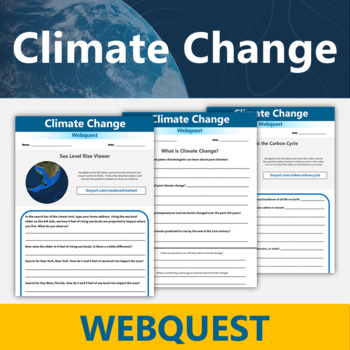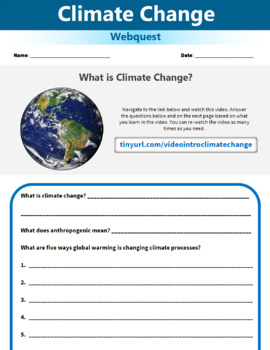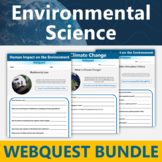Climate Change and Global Warming Webquest Earth Day Activity
- PDF
- Internet Activities
- Webquests
- Easel Activity
What educators are saying
Also included in
- This webquest value growing bundle makes learning about climate change and the human impact on the environment easy and engaging! New resources will be created and added free of charge!Students will learn about:Primary human impacts on the environment and services provide by natureThe causes of anthPrice $6.00Original Price $11.98Save $5.98
Description
This webquest makes learning about climate and environmental change easy and engaging!
Students will learn about:
- The causes of anthropogenic and natural climate change, in the past and present
- Rising sea levels
- The carbon cycle
- Changes in climate and climate indicators over time
- Carbon footprints
Students will access subject matter and student appropriate digital resources, including videos and interactive activities, and complete seven worksheets with fill-in-the blank and free response questions. This webquest helps organize what students learn from the digital resources and ensures they maximize the educational value of them.
This webquest makes for a terrific introduction to the topic, review activity, sub plan, or enrichment lesson! Links are shortened and student friendly. Both color and black and white printable versions are provided. An answer key is provided.
Follow Learning Pyramid to stay in the loop about sales, free releases, and new products!







